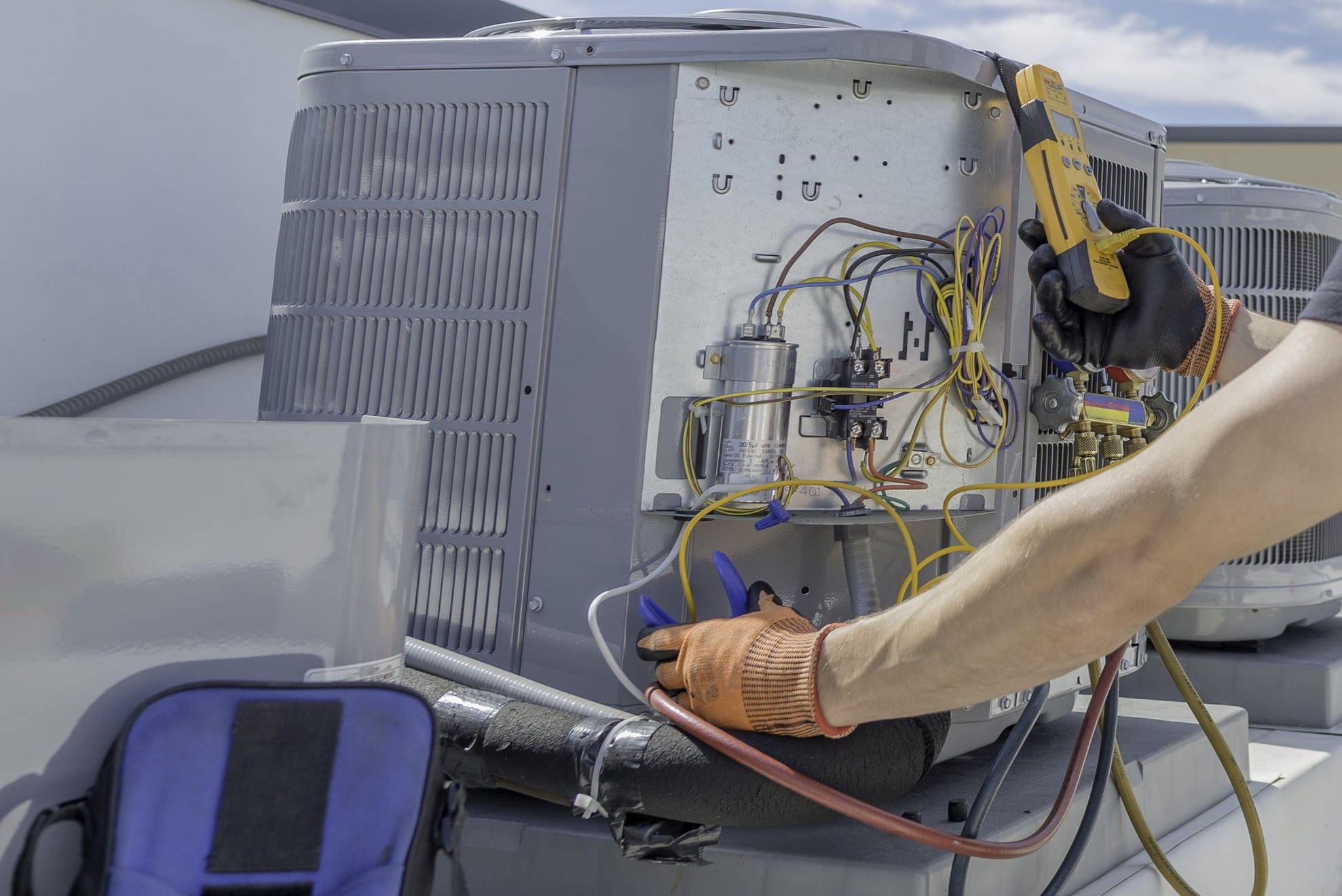
Expert Tips on HVAC Noise Reduction
HVAC noise reduction techniques can help restore the peace and quiet to your living space. By understanding and applying these strategies, you can significantly lower the noise levels and enhance your home comfort.
Noise from your heating, ventilation, and air conditioning unit can stem from various sources. Sometimes, it’s a simple fix, while other times, it might require a bit more attention. Residents in areas like Coppell, TX, have successfully reduced HVAC noise with expert tips. These strategies not only quiet down the system but also improve its efficiency and longevity.
Implementing HVAC noise reduction methods doesn’t have to be a daunting task. With the right approach, homeowners in Bedford, TX, and beyond can achieve a serene environment. It’s all about identifying the source of the noise and addressing it with targeted solutions. This process can make a world of difference in enhancing the overall comfort of your home.
In conclusion, tackling HVAC noise is a worthwhile endeavor for anyone looking to improve their home environment. Whether you’re in Carrollton, Coppell, or Bedford, TX, the benefits of HVAC noise reduction are clear. It leads to a quieter, more peaceful home where you can relax and unwind without the constant background noise of a running HVAC system.
Understanding the Common Causes of HVAC Noise
To effectively tackle HVAC noise, it’s crucial to pinpoint its origins. Common sources include loose parts, such as screws or belts, which can vibrate and produce sound. Regular maintenance can identify and tighten these components, leading to a quieter system. This step is essential for homeowners in Coppell, TX, aiming for a serene living environment.
Another frequent cause of noise is an unbalanced fan. When fan blades are not evenly weighted, they can cause the unit to shake and emit loud noises. A professional can assess and correct this issue, ensuring the fan operates smoothly. This adjustment significantly contributes to HVAC noise reduction, enhancing comfort in homes across Bedford, TX.
Ductwork can also play a role in the noise level of your HVAC system. If ducts are too small or improperly installed, they can restrict airflow and create a whistling or banging sound. Upgrading or repairing ductwork can resolve these airflow issues, making a noticeable difference in noise levels. Residents in Carrollton, Texas, often find this solution improves both air quality and tranquility.
Lastly, the age of your HVAC system can influence the amount of noise it produces. Older units tend to be less efficient and noisier due to wear and tear over time. Considering an upgrade to a newer, quieter model can be a wise choice for long-term noise reduction. This move not only decreases sound but also enhances the efficiency and reliability of your home’s heating and cooling.

HVAC Noise Reduction: Choosing the Right Insulation
Choosing the right insulation is a key step in HVAC noise reduction. Proper insulation helps to muffle the sound that travels through your HVAC system. This means less noise escapes into your living space, making your home in Coppell, TX, quieter. Insulation acts as a barrier, absorbing sound vibrations before they can spread.
In Bedford, TX, homeowners have found that adding insulation around ductwork is especially effective. This method targets noise right at the source, reducing the sound of air rushing through the ducts. By focusing on these areas, you can significantly cut down on the ambient noise in your home. It’s a straightforward solution that brings about a more peaceful environment.
Another strategy involves insulating the walls and ceilings around your HVAC unit. This approach helps to contain the noise within the utility areas, preventing it from spreading to living spaces. It’s especially useful for systems located in basements or attics, where sound can easily travel. With the right materials, you can achieve a noticeable difference in noise levels.
Lastly, consulting with a professional can help you determine the best insulation materials for HVAC noise reduction. They can offer tailored advice based on the specific needs of your home. Whether you’re in Coppell or Bedford, TX, an expert can guide you through the process. This ensures that your noise reduction efforts are both effective and suited to your home’s unique setup.
The Importance of Regular Maintenance for Quiet Operation
Regular maintenance is crucial for ensuring your HVAC system operates quietly and efficiently. By scheduling routine check-ups, homeowners in Coppell, TX, can prevent small issues from becoming bigger problems. A professional technician can identify parts that need tightening or replacing, which might otherwise contribute to unnecessary noise. This proactive approach is key to enjoying a peaceful home environment.
During these maintenance visits, technicians also lubricate moving parts to reduce friction. This simple step can significantly lower the sound your system makes as it runs. Residents in Bedford, TX, have noticed that after such servicing, their systems run smoother and quieter. Regular lubrication helps in maintaining the system’s quiet operation over time.
Cleaning is another aspect of maintenance that impacts HVAC noise reduction. Dust and debris can accumulate in your system, causing it to work harder and produce more noise. By keeping your unit clean, airflow improves, and operational noise decreases. This maintenance task supports the system’s efficiency and contributes to a quieter living space.
Lastly, professionals can calibrate your system during maintenance to ensure it’s running at optimal performance. Correct calibration can reduce the strain on your HVAC, thereby lowering the noise it generates. This process includes adjusting settings to match your home’s specific needs, ensuring your system isn’t just quiet but also tailored for your comfort. Through regular maintenance, homeowners can achieve a significant reduction in HVAC noise, enhancing the tranquility of their living environment.
Installing Anti-Vibration Mounts for Noise Control
One effective way to achieve HVAC noise reduction is by installing anti-vibration mounts. These mounts act as shock absorbers, minimizing the vibration and, consequently, the noise produced by your HVAC system. Homeowners in Coppell, TX, have experienced a noticeable decrease in noise levels after implementing this solution. It’s a straightforward yet impactful approach to enhancing the quietness of your home.
In addition to reducing noise, anti-vibration mounts also help in prolonging the lifespan of your HVAC system. By lessening the vibration, there’s less wear and tear on the components, leading to fewer maintenance issues down the line. This benefit is particularly appreciated by residents in Bedford, TX, who value both the tranquility and durability of their HVAC systems. It’s a win-win situation that improves the overall performance of your heating and cooling.
Another advantage of using anti-vibration mounts is their easy installation. Most homeowners can have these mounts installed quickly by a professional, without any major disruption to their daily routine. This simplicity makes it a popular choice for those seeking effective HVAC noise reduction methods. It’s a small change that can make a big difference in the comfort of your living space.
Lastly, combining anti-vibration mounts with other noise reduction strategies mentioned earlier can amplify the results. Whether it’s through regular maintenance, proper insulation, or upgrading to a quieter model, each step contributes to a more serene home environment. By taking a comprehensive approach to HVAC noise reduction, homeowners can enjoy the peace and quiet they deserve.
Strategic Landscaping for HVAC Noise Reduction
Strategic landscaping is an innovative approach to HVAC noise reduction, offering both aesthetic and functional benefits. By planting trees and shrubs around your HVAC unit, you can create a natural barrier that absorbs sound. This method not only reduces noise but also enhances the outdoor space of your home in Coppell, TX. It’s a simple yet effective way to achieve a quieter living environment.
Incorporating dense foliage can serve as an effective sound buffer. Plants with thick leaves and branches are especially good at muffling HVAC noise, making your backyard a peaceful retreat. For residents in Bedford, TX, choosing native plants can also attract local wildlife, adding to the serene atmosphere. This strategy combines environmental beauty with practical noise reduction.
Positioning is key when using landscaping for HVAC noise reduction. Ensure that plants are placed strategically around the unit without obstructing airflow. This careful placement ensures your system operates efficiently while minimizing noise. It’s a balance that homeowners can achieve with a bit of planning, resulting in a quieter and more efficient HVAC system.
Lastly, regular maintenance of your landscaping is crucial to sustain its noise-reducing properties. Trimming plants and trees prevents them from growing too close to the HVAC unit, which could restrict airflow and increase noise. By keeping your garden well-maintained, you not only preserve its aesthetic appeal but also its ability to reduce HVAC noise. This approach offers a natural solution to achieving a more tranquil home environment.

Upgrading to a Quieter HVAC System
When considering HVAC noise reduction, upgrading to a quieter HVAC system emerges as a highly effective strategy. Modern HVAC units are designed with noise reduction in mind, featuring advanced technology that operates more silently than older models. This upgrade can dramatically enhance the quietness of your home, making it a peaceful haven for relaxation and comfort. Homeowners in Coppell, TX, have noted the significant difference a newer, quieter system makes in their living environment.
Choosing the right system involves considering various factors, including the size of your home and your specific needs. A professional can help you select a unit that not only reduces noise but also improves energy efficiency. This tailored approach ensures that residents in Bedford, TX, enjoy both a serene and cost-effective home climate control solution. By focusing on these aspects, you can achieve an optimal balance between quiet operation and efficient performance.
Installation of a new HVAC system should be handled by certified professionals to ensure it’s done correctly. Proper installation plays a crucial role in the system’s overall efficiency and noise level. A well-installed unit will operate smoothly, minimizing potential noise issues from the start. This step is essential for maximizing the benefits of your investment in a quieter living space.
Lastly, complementing your new HVAC system with regular maintenance is key to sustaining its quiet operation. Technicians can identify and address any issues before they lead to increased noise, ensuring your system continues to run as silently as possible. Through this proactive approach, homeowners can enjoy long-term improvements in both the comfort and tranquility of their homes, making HVAC noise reduction a reality.
Soundproofing Techniques for Your Home
Exploring soundproofing techniques offers another layer of HVAC noise reduction, enhancing the peaceful atmosphere of your home. Installing soundproofing panels around the HVAC unit can absorb and minimize the sound waves, making a noticeable difference. This method is particularly effective in areas like Coppell, TX, where homes are closely situated, helping to maintain a quiet neighborhood. By integrating these panels, homeowners can effectively diminish the operational noise of their HVAC systems.
Another practical approach involves using soundproof curtains or blankets in rooms that house indoor HVAC components. These materials are designed to trap noise, preventing it from echoing throughout your living spaces. Residents in Bedford, TX, have found this solution to be a simple yet effective way to reduce ambient noise. It’s an easy adjustment that can significantly contribute to creating a more serene home environment.
Sealing gaps and cracks in your home’s exterior and around the HVAC system can also play a crucial role in noise reduction. These openings can act as channels for noise to travel through, amplifying the sound. By identifying and sealing these leaks, you can prevent noise from penetrating indoor spaces, further enhancing the tranquility of your home. This step not only aids in noise control but also improves energy efficiency by preventing air leaks.
Lastly, installing a barrier or enclosure around the outdoor unit can shield your home and neighbors from the sound. This barrier deflects sound waves away from your living areas, reducing the noise that reaches your indoor spaces. Such enclosures can be aesthetically designed to blend with your home’s exterior, offering a dual benefit of noise reduction and visual appeal. Through these soundproofing techniques, achieving HVAC noise reduction becomes an attainable goal, ensuring a quieter and more comfortable home.
Tips for Diagnosing Unusual HVAC Sounds
Diagnosing unusual HVAC sounds is the first step toward achieving HVAC noise reduction. When you hear a new or strange noise, it’s crucial to note its characteristics. Is it a whistling, banging, or humming sound? Identifying the type of noise can help professionals pinpoint the issue more quickly. This approach ensures that residents in Coppell, TX, can address noise problems efficiently, restoring tranquility to their homes.
Sometimes, the problem might be as simple as a loose component vibrating against another part of the system. Homeowners should check for any visible signs of looseness or wear and tear. However, it’s best to consult with a professional before attempting to tighten anything yourself. They have the expertise to safely secure loose parts, contributing to HVAC noise reduction without risking damage to the system.
In Bedford, TX, unusual noises often stem from airflow issues within the ductwork. A whistling sound, for instance, could indicate a blockage or leak in the ducts. Professionals can assess the ductwork for any obstructions or gaps and perform the necessary repairs. By ensuring the ducts are clear and properly sealed, airflow improves, and noise decreases.
Lastly, regular listening can be a valuable tool in maintaining a quiet HVAC system. Paying attention to the sounds your system makes and noting any changes can help catch issues early. Early detection means simpler fixes and prevents minor problems from evolving into major concerns. By staying vigilant and seeking professional help when needed, homeowners can enjoy a more peaceful living environment through effective HVAC noise reduction.
Frequently Asked Questions
What causes HVAC noise?
Several factors can lead to HVAC noise, making your system louder than usual. Loose parts inside the unit often vibrate, creating a rattling sound. Dirt and debris accumulation can also strain the system, resulting in unusual noises. Regular maintenance helps in identifying and fixing these issues, ensuring quieter operation and enhancing HVAC noise reduction efforts.
How can I reduce HVAC noise in my home?
To minimize HVAC noise in your home, start by ensuring your system undergoes regular maintenance. This keeps it running smoothly and quietly. Installing soundproofing insulation around the ductwork can also significantly reduce noise levels. Additionally, consider using rubber pads to dampen the vibrations of the HVAC unit. These simple steps can lead to effective HVAC noise reduction, enhancing the comfort of your living space.
What are common signs of HVAC noise issues?
If your HVAC system starts making unusual noises, it’s a clear sign of potential issues. Banging or clanking sounds often indicate loose parts, while whistling or hissing could suggest a leak in the system. A constant humming noise might mean the unit is working harder than it should. Paying attention to these sounds can help in early detection, making HVAC noise reduction efforts more effective.
Are there DIY HVAC noise reduction methods?
Yes, there are several DIY methods for reducing HVAC noise in your home. First, check for any loose screws or bolts and tighten them to prevent rattling sounds. You can also clean the vents and replace the air filter to ensure smooth airflow and reduce strain on the system. Placing a noise-reducing cover over the outdoor unit can also help dampen sound. Lastly, make sure all ductwork is properly sealed to prevent noise from escaping. These steps can significantly contribute to HVAC noise reduction, making your living space more comfortable.
Does regular maintenance affect HVAC noise reduction?
Regular maintenance plays a crucial role in HVAC noise reduction. It ensures all parts function smoothly, preventing the emergence of disruptive sounds. Technicians can spot and fix loose components that cause rattling noises. By keeping the system in top shape, maintenance reduces the likelihood of noise issues, enhancing your home’s tranquility.







